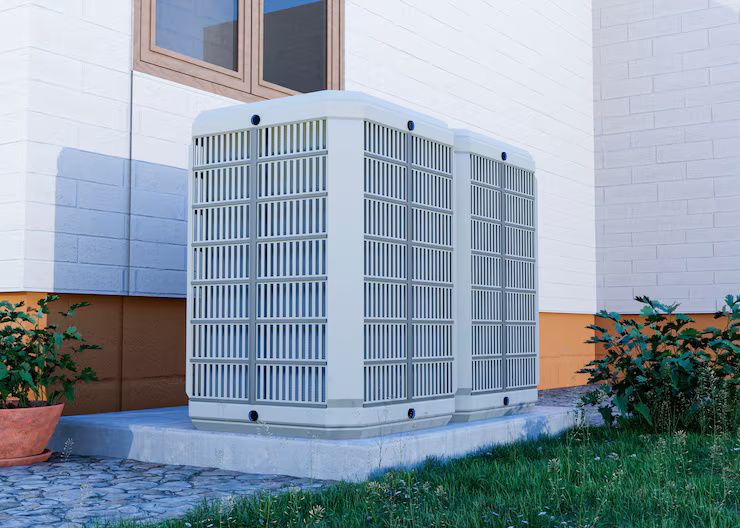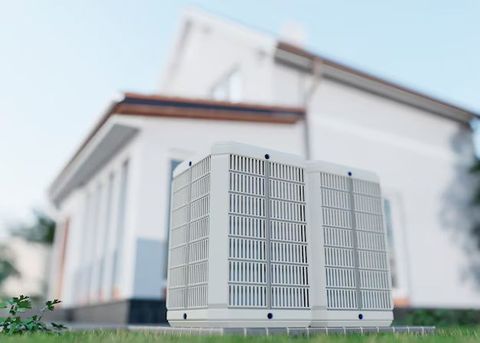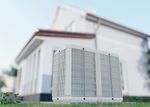
Discover Everything You Need to Know About Compact Air Systems
Compact air systems are engineered air-management units designed to deliver compressed air for machinery, tools, and industrial processes in a small, space-efficient design. These systems typically combine essential components such as compressors, filters, regulators, dryers, and storage tanks into one compact unit. Their primary purpose is to deliver reliable compressed air where larger systems may not fit or where decentralized air supply is needed.
Compact air systems emerged from the increasing demand for portable, efficient, and low-maintenance air supply solutions across manufacturing, automotive workshops, laboratories, and packaging facilities. Modern industries require flexible compressed air solutions that can meet performance standards while minimizing energy consumption and installation space. Compact air systems address these needs by offering simplified operation, reduced footprint, and improved cost efficiency.

Importance – Why Compact Air Systems Matter Today
Compact air systems are widely used because they offer practical and scalable solutions for multiple industries. Their importance has grown significantly due to global trends in space optimization, automation, and energy efficiency.
These systems matter for several reasons:
-
Space limitations in small workshops, labs, and compact production units
-
Energy efficiency due to advancements in compressor technology
-
Reduced maintenance compared to traditional multi-piece compressed air setups
-
Portability, allowing operators to move systems between workstations
-
Improved safety through integrated filtration and pressure control
-
Reliable performance for tools requiring constant air pressure
Compact air systems benefit:
-
Mechanical and automotive workshops
-
Manufacturing facilities
-
Medical laboratories
-
Printing and packaging industries
-
Food processing units
-
Construction sites using pneumatic tools
They solve problems related to uninterrupted airflow, pressure stability, moisture buildup, and contamination—common issues in compressed air operations.
Recent Updates – New Trends in Compact Air Systems
The last year has shown several updates and developments in compact air system technology:
-
Energy-efficient motor upgrades (2023–2024): Manufacturers continue focusing on high-efficiency motors such as IE3 and IE4 standards, which reduce energy consumption and heat output.
-
Smart monitoring integration: Compact systems now include digital pressure monitoring, remote tracking, and mobile app connectivity for predictive maintenance.
-
Noise reduction technology improvements (2024): Many brands introduced sound-insulated housings and vibration dampening to meet stricter workplace noise regulations.
-
Oil-free compressor growth: Demand for oil-free compact systems increased in pharmaceutical, food processing, and laboratory applications where contamination control is critical.
-
Environmental compliance reporting: Updated energy-performance guidelines in mid-2023 pushed manufacturers to redesign air systems to meet improved sustainability metrics.
Laws or Policies – Regulatory Framework Affecting Compact Air Systems
Compact air systems are affected by multiple regulations depending on the country or region. These rules help ensure safety, efficiency, and quality, especially in industrial environments.
Common regulatory areas include:
-
Energy Efficiency Standards: Many countries follow ISO 1217 for air compressor performance testing and energy ratings.
-
Safety Regulations: Industrial workplace regulations require adherence to pressure equipment directives and safe operation guidelines.
-
Environmental Policies: Air systems must meet emissions and noise control standards, especially in urban zones or indoor commercial spaces.
-
Food and Pharmaceutical Compliance: Oil-free compact systems must meet hygiene standards when used in sensitive sectors.
-
Building and Installation Codes: Local building authorities often regulate installation of pressurized equipment to prevent safety risks.
In regions like Europe, the Pressure Equipment Directive (PED) sets strict guidelines for systems operating above specific pressure thresholds. Other countries may follow national standards regarding energy usage, workplace noise levels, or safety compliance.
Tools and Resources – Useful Platforms to Understand Compact Air Systems
A variety of tools and resources can help users select, calculate, maintain, or optimize compact air systems. These include:
-
Airflow calculators – Estimate required airflow (CFM/LPM) based on tool needs.
-
Energy consumption calculators – Measure electricity usage and operational cost.
-
Maintenance scheduling apps – Track service intervals and filter replacements.
-
Manufacturers’ technical manuals – Provide detailed safety and performance guidelines.
-
Industry websites – Offer comparison charts of compressor technologies.
-
Thermal imaging tools – Used to identify heat losses in compressor housings.
-
Auditing checklists – Evaluate system efficiency and leak detection.
Online engineering platforms also provide training modules on compressor selection, air dryer importance, and pressure-loss calculations.
Table: Key Types of Compact Air Systems and Their Characteristics
| Compact Air System Type | Common Use | Space Requirement | Maintenance Needs |
|---|---|---|---|
| Oil-free compressor | Labs, medical, food processing | Low | Low |
| Rotary screw compressor | Industrial and manufacturing | Moderate | Medium |
| Portable piston compressor | Workshops, construction | Low | Medium |
| Integrated modular units | Packaging, printing, factories | Moderate | Low–Medium |
| Silent/low-noise units | Indoor office or testing labs | Very low | Low |
FAQs – Clear Answers to Common Questions
1. What is a compact air system used for?
Compact air systems supply compressed air for tools, machines, and processes in settings where space is limited or mobility is needed.
2. Are compact air systems energy-efficient?
Most modern compact systems are designed with energy-efficient motors, low-noise technology, and smart monitoring features to reduce energy usage.
3. Do compact air systems require regular maintenance?
Yes. Maintenance includes filter replacement, pressure checks, lubrication for piston-type units, and monitoring of moisture separators. However, maintenance needs are lower compared to traditional multi-component air setups.
4. What industries benefit most from compact air systems?
Industries such as automotive repair, manufacturing, laboratories, printing, food processing, and construction commonly use compact systems.
5. Are oil-free compact air systems safer for sensitive applications?
Yes. Oil-free systems prevent contamination, making them suitable for medical, chemical, and food-grade operations.
Final Thoughts
Compact air systems provide efficient, reliable, and space-saving compressed air solutions for industrial, commercial, and professional environments. Their growing importance reflects trends in sustainability, noise reduction, automation, and energy performance. As technology continues to advance, compact air systems are likely to become even more integrated, intelligent, and adaptable to a wider range of applications. Understanding their features, regulations, and market trends allows businesses and individuals to make informed and safe decisions.






